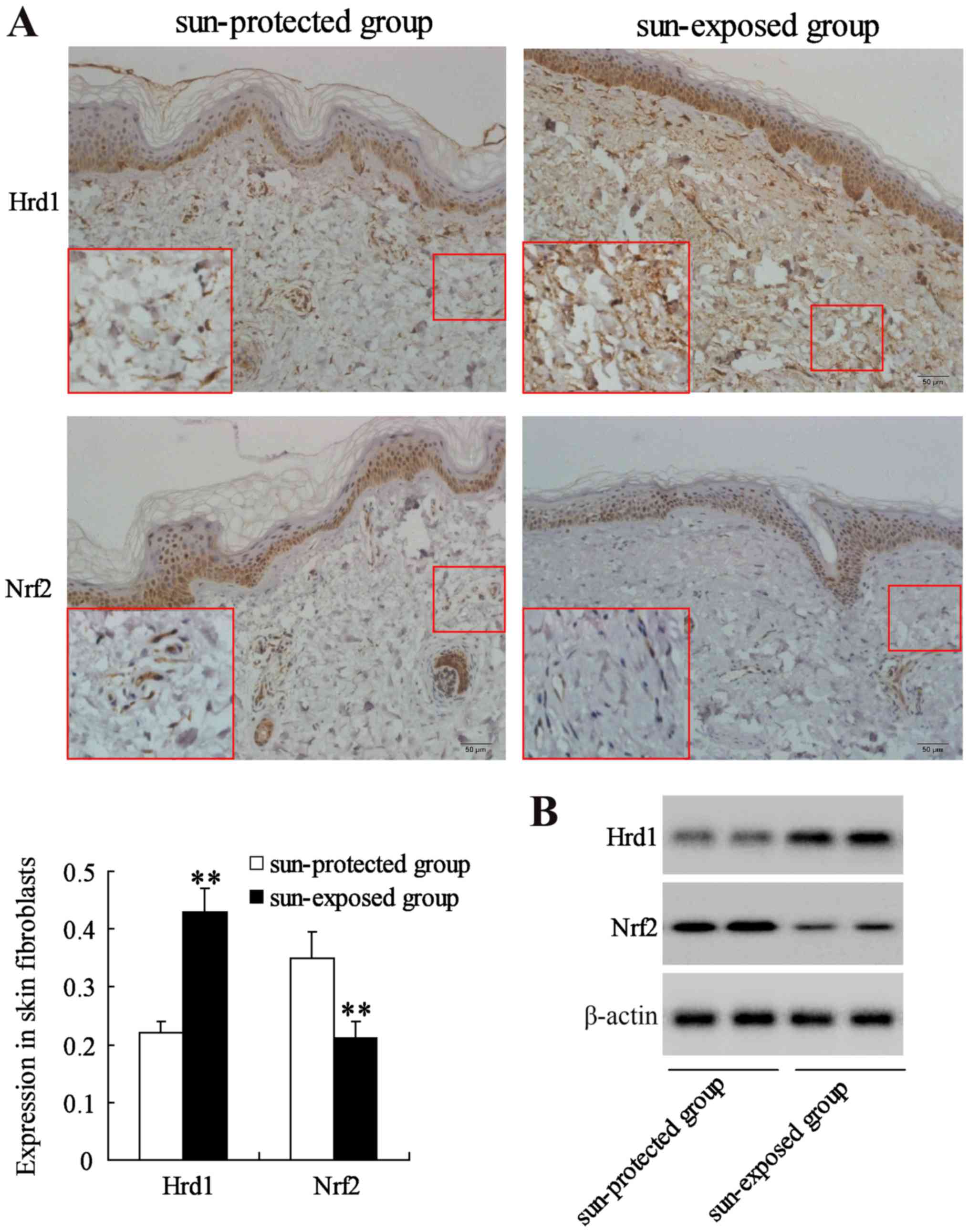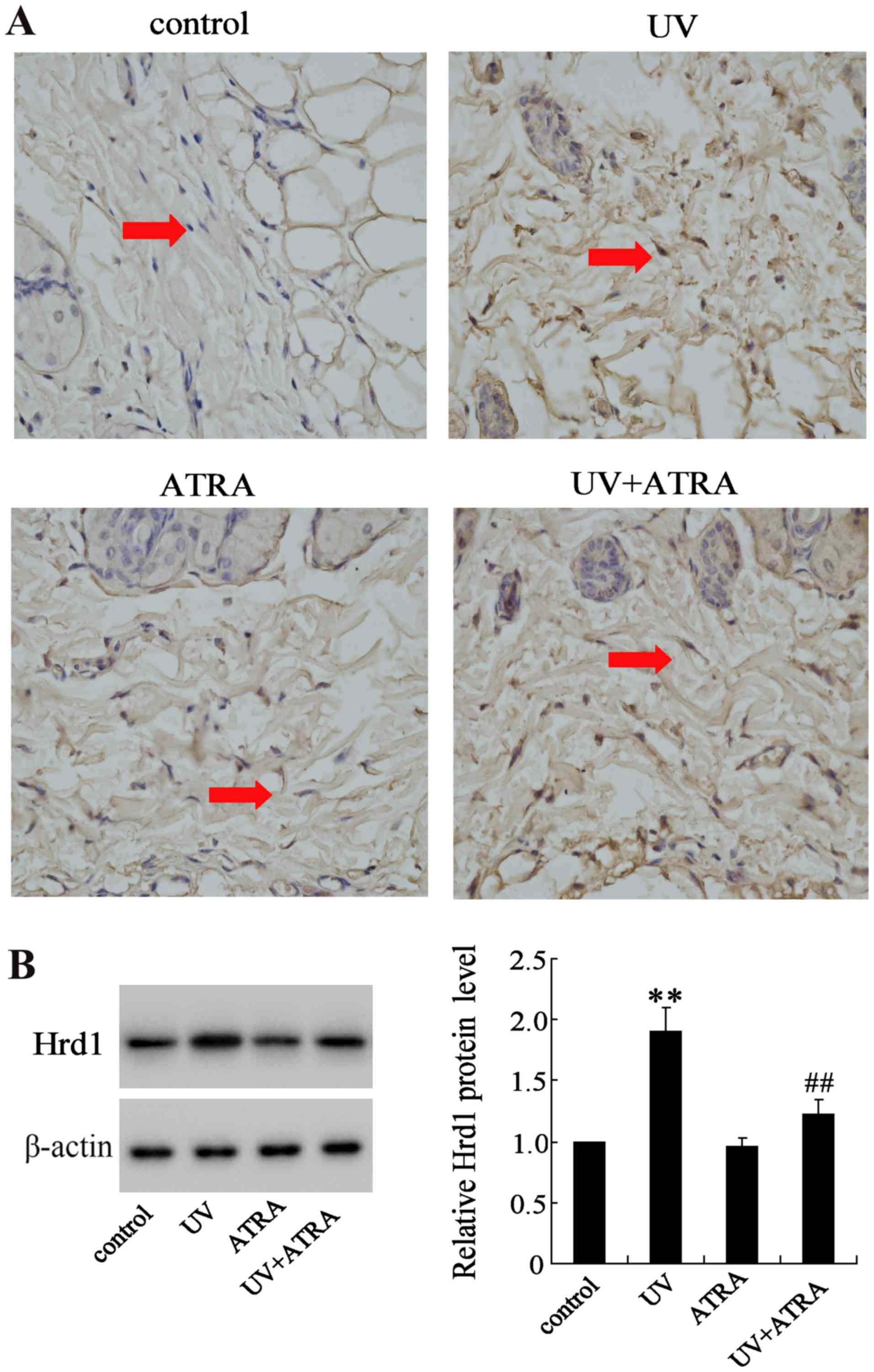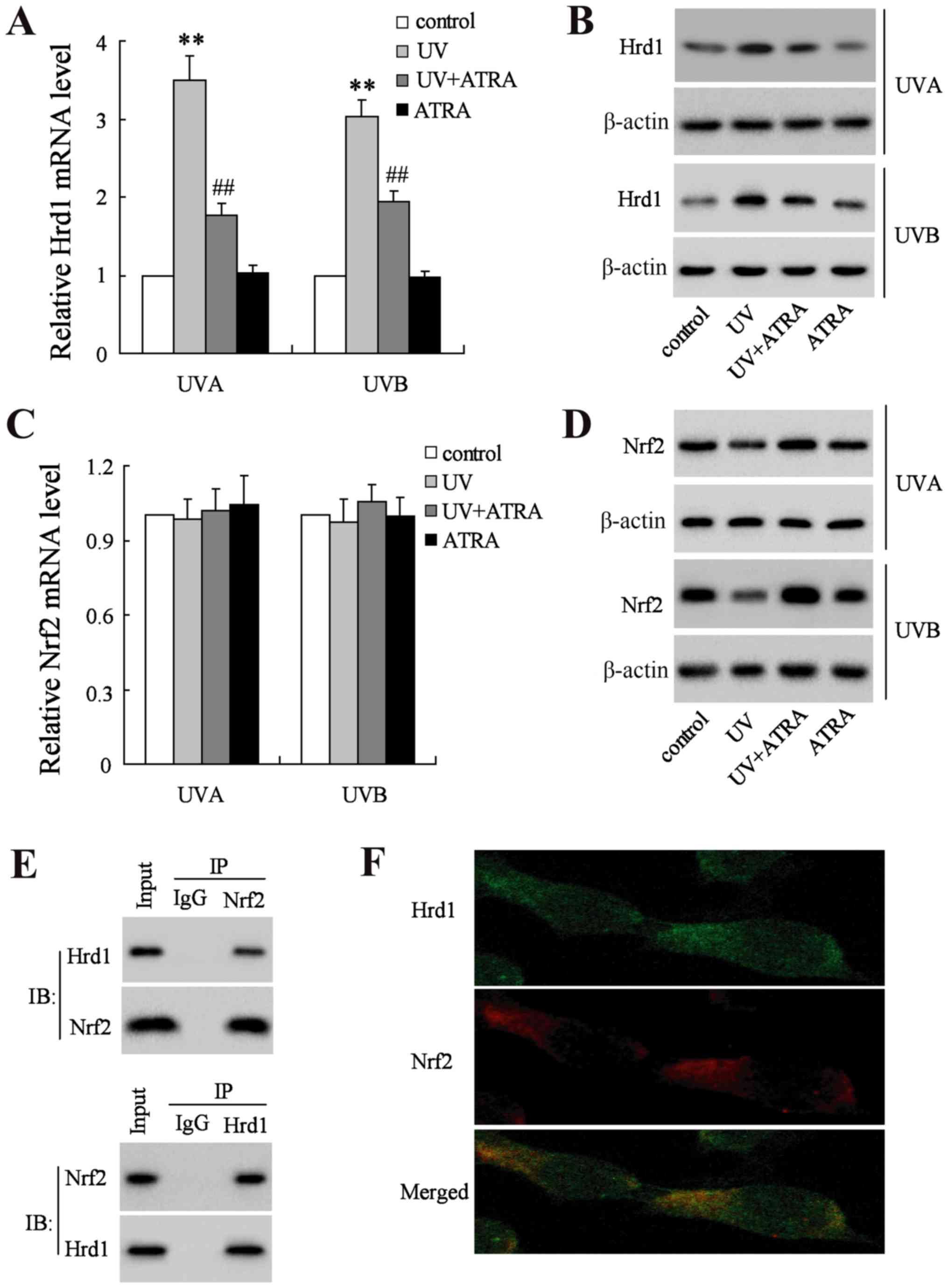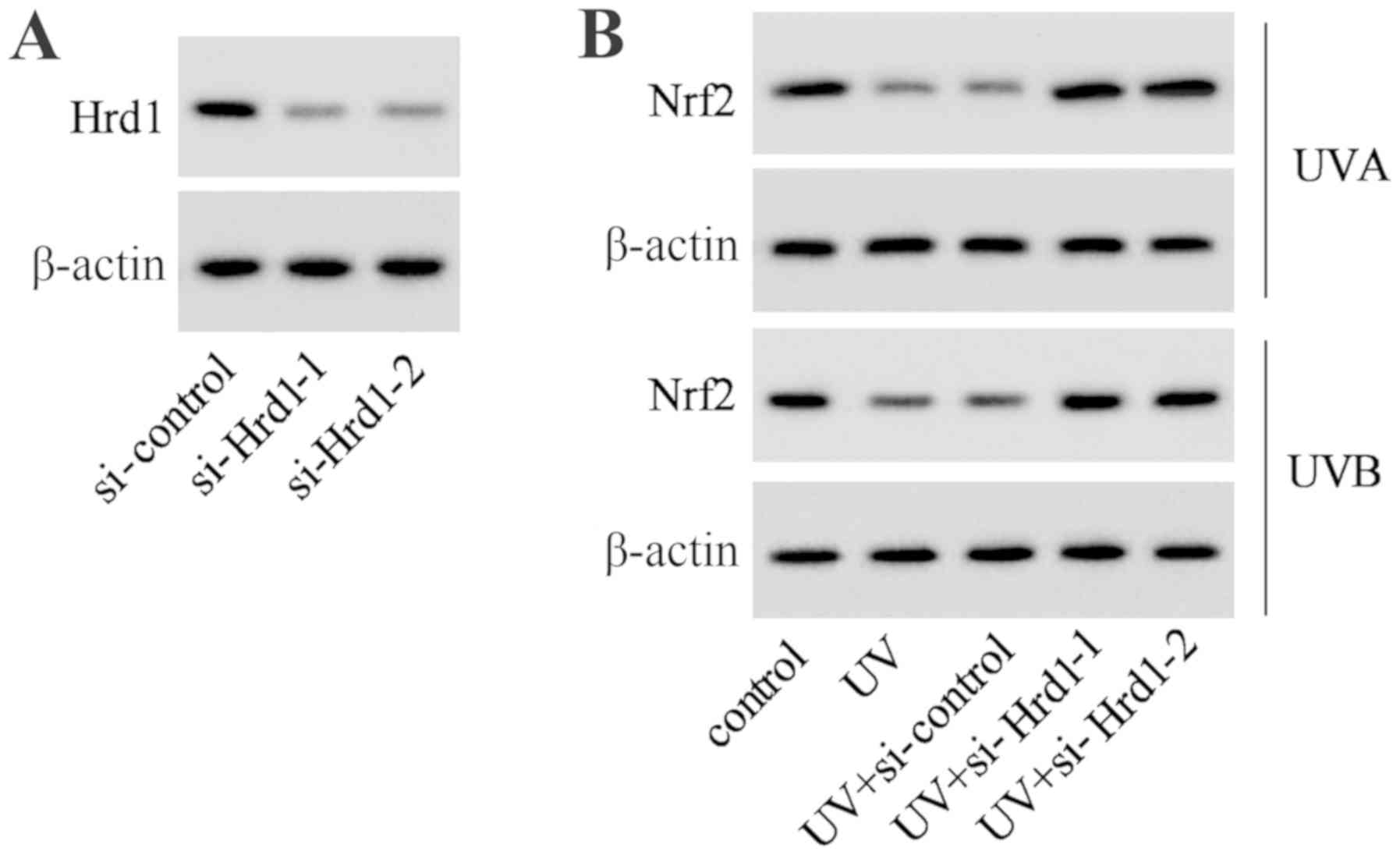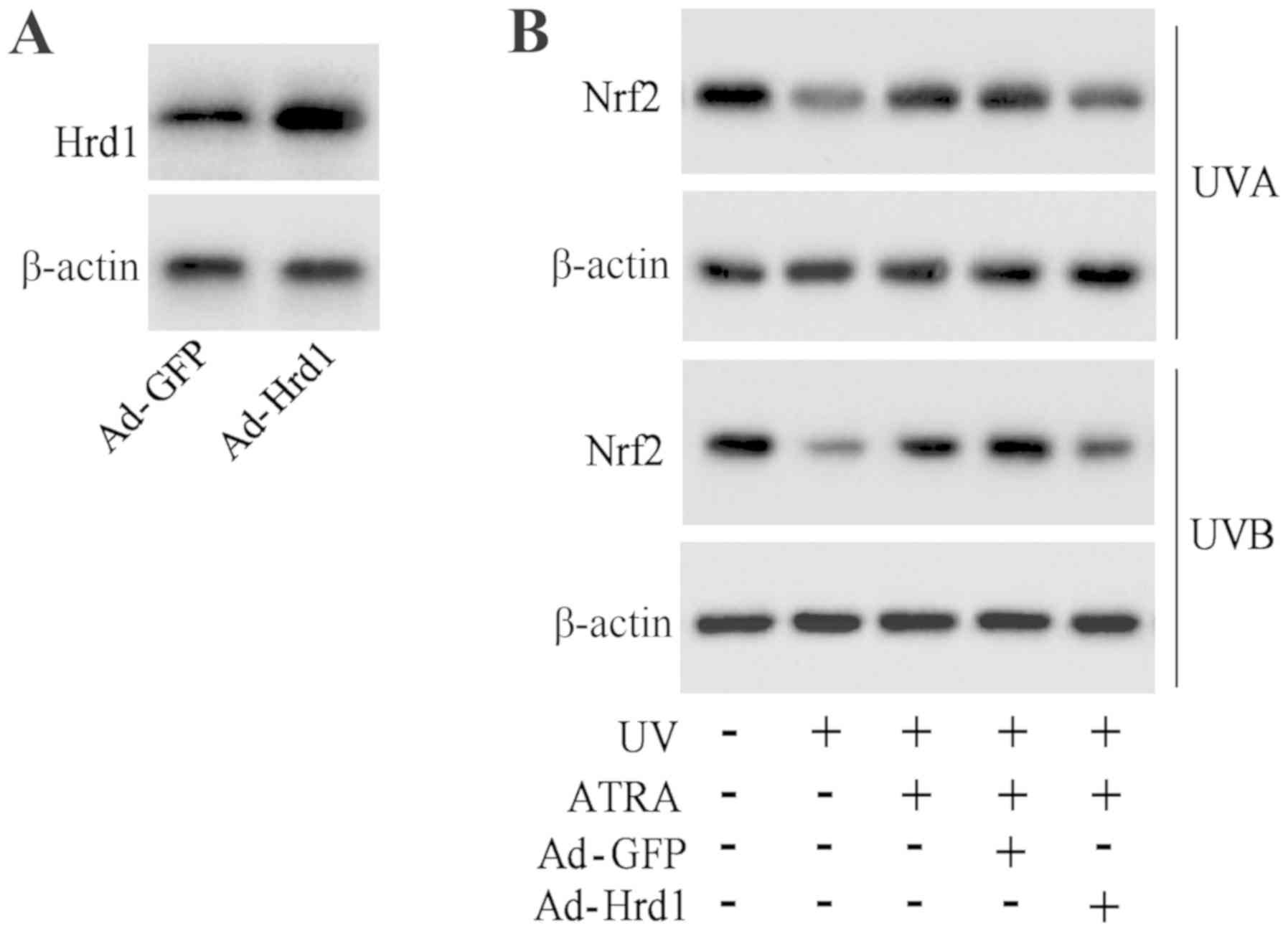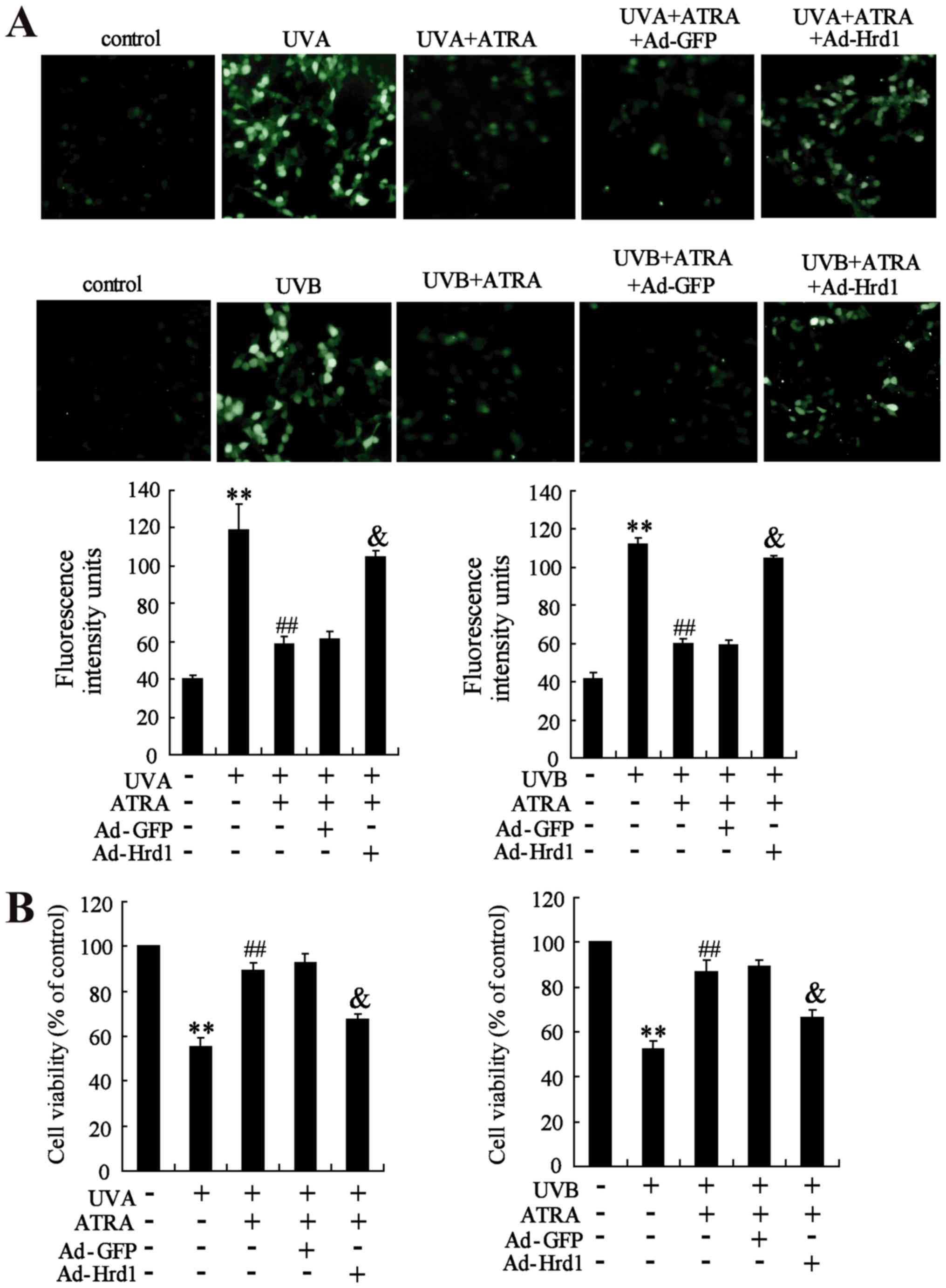|
1
|
Vedrenne N, Coulomb B, Danigo A, Bonté F
and Desmoulière A: The complex dialogue between (myo)fibroblasts
and the extracellular matrix during skin repair processes and
ageing. Pathol Biol (Paris). 60:20–27. 2012. View Article : Google Scholar : PubMed/NCBI
|
|
2
|
Cavinato M and Jansen-Dürr P: Molecular
mechanisms of UVB-induced senescence of dermal fibroblasts and its
relevance for photoaging of the human skin. Exp Gerontol. 94:78–82.
2017. View Article : Google Scholar : PubMed/NCBI
|
|
3
|
Wenk J, Brenneisen P, Meewes C, Wlaschek
M, Peters T, Blaudschun R, Ma W, Kuhr L, Schneider L and
Scharffetter-Kochanek K: UV-induced oxidative stress and
photoaging. Curr Probl Dermatol. 29:83–94. 2001. View Article : Google Scholar : PubMed/NCBI
|
|
4
|
Oliveira MM, Daré RG, Barizão ÉO,
Visentainer JV, Romagnolo MB, Nakamura CV and Truiti MDCT:
Photodamage attenuating potential of Nectandra hihua against
UVB-induced oxidative stress in L929 fibroblasts. J Photochem
Photobiol B. 181:127–133. 2018. View Article : Google Scholar : PubMed/NCBI
|
|
5
|
Liang B, Peng L, Li R, Li H, Mo Z, Dai X,
Jiang N, Liu Q, Zhang E, Deng H, et al: Lycium barbarum
polysaccharide protects HSF cells against ultraviolet-induced
damage through the activation of Nrf2. Cell Mol Biol Lett.
23:182018. View Article : Google Scholar : PubMed/NCBI
|
|
6
|
Parzonko A and Kiss AK: Caffeic acid
derivatives isolated from Galinsoga parviflora herb protected human
dermalfibroblasts from UVA-radiation. Phytomedicine. 57:215–222.
2019. View Article : Google Scholar : PubMed/NCBI
|
|
7
|
Silva-Palacios A, Ostolga-Chavarría M,
Zazueta C and Königsberg M: Nrf2: Molecular and epigenetic
regulation during aging. Ageing Res Rev. 47:31–40. 2018. View Article : Google Scholar : PubMed/NCBI
|
|
8
|
Zhong JL, Edwards GP, Raval C, Li H and
Tyrrell RM: The role of Nrf2 in ultraviolet a mediated heme
oxygenase 1 induction in human skin fibroblasts. Photochem
Photobiol Sci. 9:18–24. 2010. View Article : Google Scholar : PubMed/NCBI
|
|
9
|
Schäfer M, Dütsch S, auf dem Keller U and
Werner S: Nrf2: A central regulator of UV protection in the
epidermis. Cell Cycle. 9:2917–2918. 2010. View Article : Google Scholar : PubMed/NCBI
|
|
10
|
Saw CL, Huang MT, Liu Y, Khor TO, Conney
AH and Kong AN: Impact of Nrf2 on UVB-induced skin
inflammation/photoprotection and photoprotective effect of
sulforaphane. Mol Carcinog. 50:479–486. 2011. View Article : Google Scholar : PubMed/NCBI
|
|
11
|
Francz PI, Conrad J and Biesalski HK:
Modulation of UVA-induced lipid peroxidation and suppression of
UVB-induced ornithine decarboxylase response by all-trans retinoic
acid in human skin fibroblasts in vitro. Biol Chem. 379:1263–1269.
1998. View Article : Google Scholar : PubMed/NCBI
|
|
12
|
Hiraishi Y, Hirobe S, Iioka H, Quan YS,
Kamiyama F, Asada H, Okada N and Nakagawa S: Development of a novel
therapeutic approach using a retinoic acid-loaded microneedle patch
for seborrheic keratosis treatment and safety study in humans. J
Control Release. 171:93–103. 2013. View Article : Google Scholar : PubMed/NCBI
|
|
13
|
Tan KP, Kosuge K, Yang M and Ito S: NRF2
as a determinant of cellular resistance in retinoic acid
cytotoxicity. Free Radic Biol Med. 45:1663–1673. 2008. View Article : Google Scholar : PubMed/NCBI
|
|
14
|
Kaneko M, Okuma Y and Nomura Y: Molecular
approaches to the treatment, prophylaxis, and diagnosis of
Alzheimer's disease: Possible involvement of HRD1, a novel molecule
related to endoplasmic reticulum stress, in Alzheimer's disease. J
Pharmacol Sci. 118:325–330. 2012. View Article : Google Scholar : PubMed/NCBI
|
|
15
|
Amano T, Yamasaki S, Yagishita N,
Tsuchimochi K, Shin H, Kawahara K, Aratani S, Fujita H, Zhang L,
Ikeda R, et al: Synoviolin/Hrd1, an E3 ubiquitin ligase, as a novel
pathogenic factor for arthropathy. Genes Dev. 17:2436–2449. 2003.
View Article : Google Scholar : PubMed/NCBI
|
|
16
|
Wu T, Zhao F, Gao B, Tan C, Yagishita N,
Nakajima T, Wong PK, Chapman E, Fang D and Zhang DD: Hrd1
suppresses Nrf2-mediated cellular protection during liver
cirrhosis. Genes Dev. 28:708–722. 2014. View Article : Google Scholar : PubMed/NCBI
|
|
17
|
Kim H, Bhattacharya A and Qi L:
Endoplasmic reticulum quality control in cancer: Friend or foe.
Semin Cancer Biol. 33:25–33. 2015. View Article : Google Scholar : PubMed/NCBI
|
|
18
|
Nomura J, Hosoi T, Kaneko M, Ozawa K,
Nishi A and Nomura Y: Neuroprotection by endoplasmic reticulum
stress-induced HRD1 and chaperones: Possible therapeutic targets
for Alzheimer's and Parkinson's disease. Med Sci (Basel). 4(pii):
E142016.PubMed/NCBI
|
|
19
|
Fonseca SG, Ishigaki S, Oslowski CM, Lu S,
Lipson KL, Ghosh R, Hayashi E, Ishihara H, Oka Y, Permutt MA and
Urano F: Wolfram syndrome 1 gene negatively regulates ER stress
signaling in rodent and human cells. J Clin Invest. 120:744–755.
2010. View
Article : Google Scholar : PubMed/NCBI
|
|
20
|
Shim JH, Shin DW, Noh MS and Lee TR:
Reduced collagen internalization via down-regulation of MRC2
expression by UVA irradiation and its recovery by all-trans
retinoic acid. J Dermatol Sci. 73:163–166. 2014. View Article : Google Scholar : PubMed/NCBI
|
|
21
|
Livak KJ and Schmittgen TD: Analysis of
relative gene expression data using real-time quantitative PCR and
the 2(-Delta Delta C(T)) method. Methods. 25:402–408. 2001.
View Article : Google Scholar : PubMed/NCBI
|
|
22
|
Afri M, Frimer AA and Cohen Y: Active
oxygen chemistry within the liposomal bilayer. Part IV: Locating
2′,7′-dichlorofluorescein (DCF), 2′,7′-dichlorodihydrofluorescein
(DCFH) and 2′,7′-dichlorodihydrofluorescein diacetate (DCFH-DA) in
the lipid bilayer. Chem Phys Lipids. 131:123–133. 2004. View Article : Google Scholar : PubMed/NCBI
|
|
23
|
Saito R, Kaneko M, Kitamura Y, Takata K,
Kawada K, Okuma Y and Nomura Y: Effects of oxidative stress on the
solubility of HRD1, a ubiquitin ligase implicated in Alzheimer's
disease. PLoS One. 9:e945762014. View Article : Google Scholar : PubMed/NCBI
|
|
24
|
O'Connell MA and Hayes JD: The Keap1/Nrf2
pathway in health and disease: From the bench to the clinic.
Biochem Soc Trans. 43:687–689. 2015. View Article : Google Scholar : PubMed/NCBI
|
|
25
|
Hirota A, Kawachi Y, Itoh K, Nakamura Y,
Xu X, Banno T, Takahashi T, Yamamoto M and Otsuka F: Ultraviolet A
irradiation induces NF-E2-related factor 2 activation in dermal
fibroblasts: Protectiverole in UVA-induced apoptosis. J Invest
Dermatol. 124:825–832. 2005. View Article : Google Scholar : PubMed/NCBI
|
|
26
|
Gęgotek A, Rybałtowska-Kawałko P and
Skrzydlewska E: Rutin as a mediator of lipid metabolism and
cellular signaling pathways interactions in fibroblasts altered by
UVA and UVB radiation. Oxid Med Cell Longev. 2017:47213522017.
View Article : Google Scholar : PubMed/NCBI
|
|
27
|
Saito Y, Tsuruma K, Ichihara K, Shimazawa
M and Hara H: Brazilian green propolis water extract up-regulates
the early expression level of HO-1 and accelerates Nrf2 after UVA
irradiation. BMC Complement Altern Med. 15:4212015. View Article : Google Scholar : PubMed/NCBI
|
|
28
|
Kannan S and Jaiswal AK: Low and high dose
UVB regulation of transcription factor NF-E2-related factor 2.
Cancer Res. 66:8421–8429. 2006. View Article : Google Scholar : PubMed/NCBI
|
|
29
|
Nilsson J, Gritli-Linde A and Heby O: Skin
fibroblasts from spermine synthase-deficient hemizygous gyro male
(Gy/Y) mice overproduce spermidine and exhibit increased resistance
to oxidative stress but decreased resistance to UV irradiation.
Biochem J. 352:381–387. 2000. View Article : Google Scholar : PubMed/NCBI
|
|
30
|
Wu PY, Huang CC, Chu Y, Huang YH, Lin P,
Liu YH, Wen KC, Lin CY, Hsu MC and Chiang HM: Alleviation of
ultraviolet B-induced photodamage by coffea arabica extract in
human skin fibroblasts and hairless mouse skin. Int J Mol Sci.
18:E7822017. View Article : Google Scholar : PubMed/NCBI
|



